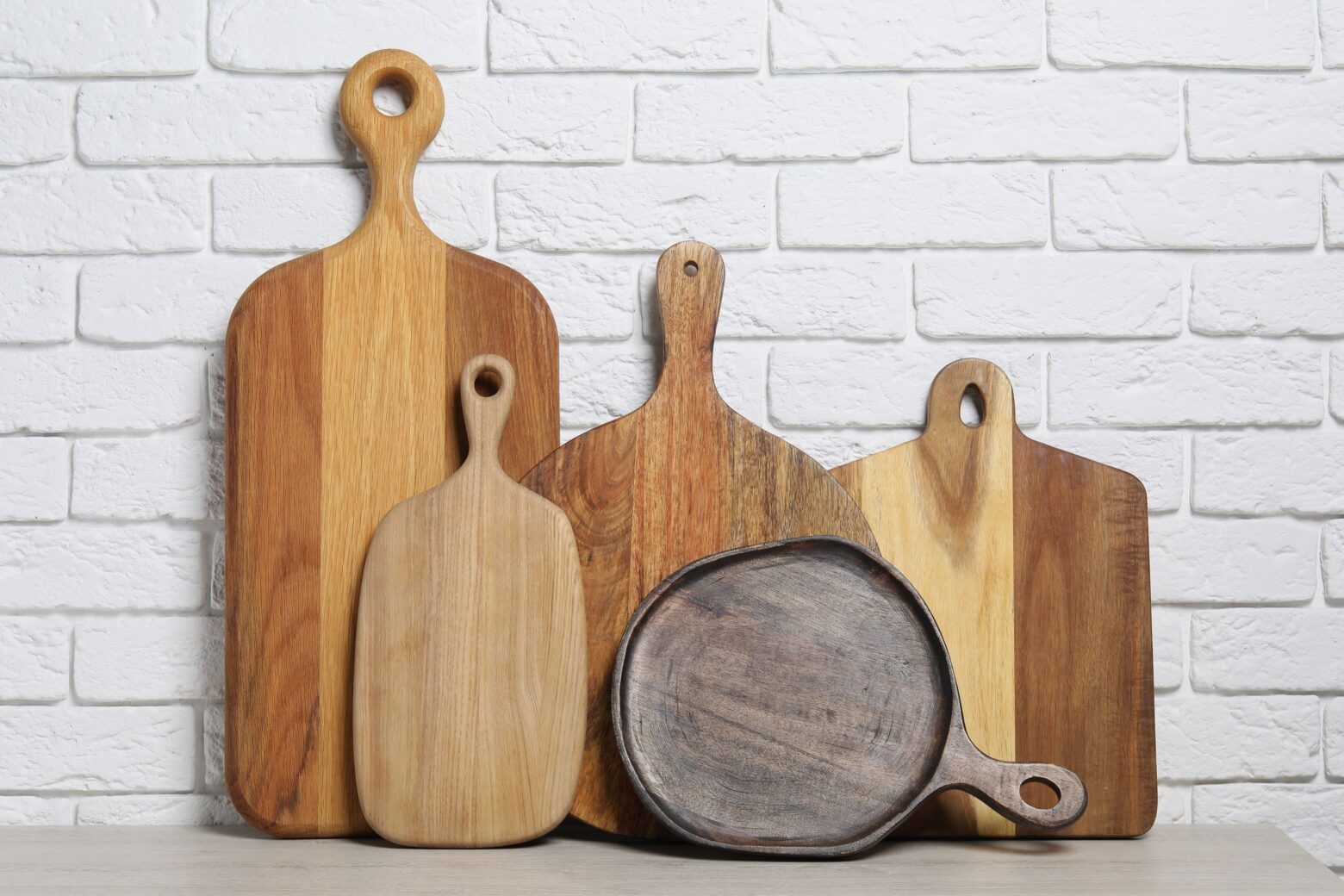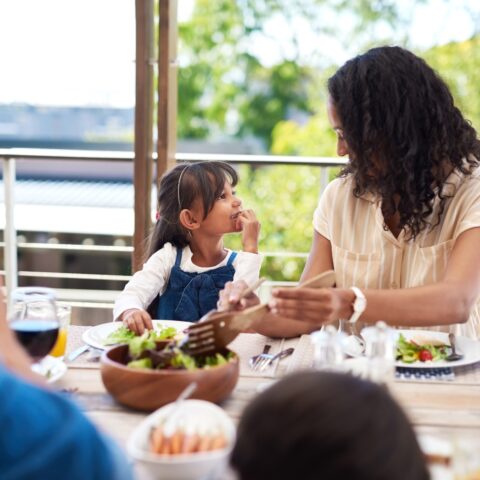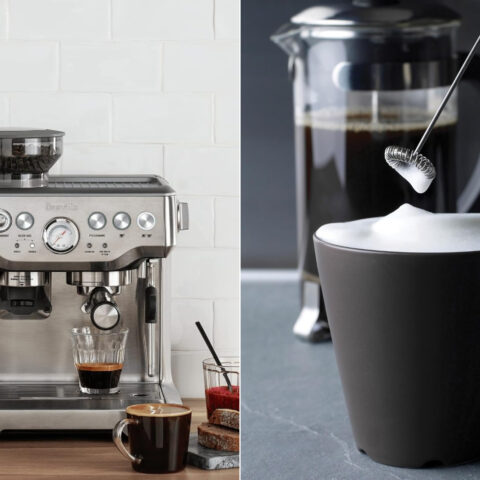The Best Cutting Boards for Your Kitchen

There is no harder working kitchen tool than the cutting board. Yes, they protect your countertops and knives from damage, but they are so much more. Here, we break down the essentials of choosing the right cutting boards for different uses and explain why the material matters to your health.
Types of Cutting Boards
While some cooks use one board for everything, we recommend having multiple types on hand for various needs. The board’s surface must be hard enough to allow smooth, effortless cutting but soft enough to protect the knife’s edge, and there are other issues to consider.
For instance, a washable cutting board for poultry and meats should be reserved to prevent cross-contamination from food bacteria. [1] Grooved boards can collect meat juices, but some may prefer a smooth board for easier cleaning. Small boards are ideal for kids learning to cook, while large stable boards are meant to always live on the counter.
Wooden Cutting Boards
Hardwood boards are the tried-and-true top pick for food prep. Chefs like hardwood because of its smooth cutting experience and easily workable surface area when scooping up diced and chopped foods.
Well-made wood cutting boards (such as Boos and Dalstrong brands) at 1.5 inches or thicker resist warping and will last a very long time. A groove surrounding the outer edge to collect liquids and other bits is an excellent option.
However, the price of hardwood boards may be difficult to digest. It’s an investment, and a sound, high-quality board will last a lifetime. Edge-grain boards (made from long strips) are higher priced, so if cost is a concern, look for more affordable end-grain cutting boards made from smaller pieces of wood. The type of wood can matter, for instance:
- Maple is durable, resistant to scratches, and kind to knives. The lighter color may pick up stains.
- Walnut, softer than maple, is easier on knives but a little less resistant to scratches than maple.
- Cherry wood wins the beauty contest for its red hues, but it’s not as durable as walnut or maple.
- Acacia has medium hardness so that it won’t hurt knives. It’s durable, affordable, and moisture resistant.
- Teak is durable, mold resistant, and low maintenance—but it is high in silica, which makes it hard on knives.
Caring for Wood Cutting Boards
Hardwood boards require more care than other surfaces. They can take up odors (like garlic) and stains (like beets). To remove persistent smells or stains, sprinkle coarse salt and lemon juice on the board and let sit for a few minutes before cleaning.
Wooden boards should never go in the dishwasher. After prepping most foods, a light washing of warm water with dish soap will do the trick to remove stuck-on food and bacteria. Remember to wash all sides of the board for a more aggressive clean. If you only wash one side, the board may warp. Set the board on its side upright or elevate the edge to allow it to dry completely.
Once or twice a month, spread a modest layer of food-safe mineral oil over a clean and dry board, followed by beeswax or a cream/wax made for cutting boards. This will rehydrate the wood and close up any pores, knicks, and knife scars.
Each of these steps prevents mold and bacteria from setting in. Think of this as you would caring for a cast iron pan; it takes a little effort but can make a difference in the lifetime of the board.
Sustainable Cutting Boards
Some consumers prefer to choose their kitchen utensils based on how sustainable the materials are. There are several sustainable cutting board materials out there, and they each have their own pros and cons.
Bamboo
Bamboo has become a popular material for cutting boards. On the plus side, they are inexpensive and made from regenerative material. The con is that bamboo cutting boards are tough on knives, and the surface may become porous and rough over time.
Bamboo is a grass with a higher tensile strength than knives because of its high amount of silica. Tensile strength measures the amount of pressure a material can endure before cracking. If you use bamboo, you may feel like your knife is sliding or skating over the surface because bamboo’s tensile strength is 28,000 pounds per square inch (PSI), above a steel knife’s tensile strength of 23,000 PSI. [2]
Bamboo is a porous material, which means it can collect food-borne bacteria if not cleaned often. Chefs report that bamboo cutting boards become rough or fuzzy with heavy use and cite concerns about the material transferring to food. If you prefer bamboo, keep it clean with warm, soapy water, remove stains with lemon, and apply finishing mineral oil to keep the wood smooth.
Paper Composite (AKA Epicurean)
These cutting boards have a surprising history from skateparks. The founders of TrueRide perfected the craft of using paper composite for skate ramps. The three founding entrepreneurs made cutting boards from the scraps on a whim, and a new company, Epicurean, was born.
Reviews from chefs and home cooks report that these composite material cutting boards are sustainable, durable, dishwasher safe, and don’t damage knives. However, some chefs who use specialized carbon-steel, Japanese-style knives say the boards don’t hold up as well as wood.
Epicurean boards come in all sizes and thicknesses. They are NSF certified for food safety, Forest Stewardship Council certified for sustainable production practices, and GREENGUARD certified for low-level emissions of volatile organic compounds.
Glass
Glass cutting boards are often made from recycled glass and can be easily cleaned. However, they are very tough on knives and if they break, they are not recyclable. If you already have a glass cutting board but are concerned about damaging your knives, consider keeping it to use as a serving tray for pre-cut food.
Plastic and Silicone Cutting Boards
For many years, high-density polyethylene (HDPE) was one of the only options other than wood for cutting boards. They were often recommended for cutting poultry and meats to prevent cross-contamination in the kitchen. In recent years they have been losing favor because of bacterial issues and concerns about microplastics transferring to food.
A 2023 study measured carrots on a cutting board and found 15 milligrams of microplastics per cut. [3] Also, HDPE boards are less sanitary compared to wooden cutting boards. One study showed 99% of bacteria died on a wooden cutting board within three minutes, while the bacteria multiplied on the HDPE board. [4]
Silicone cutting boards are gaining in popularity over HDPE boards. They are made from silicon and oxygen, similar to kitchen baking molds and utensils. Silicone boards are lightweight, dishwasher safe, kind to knives, don’t leave knife scars for slicing (not vigorous chopping), and resist stains. Based on user experiences, silicone cutting boards are a suitable replacement for HDPE cutting boards.
Selecting the Right Cutting Board
There is much more to consider than you may have realized when buying a cutting board. As a starting point, we recommend the following:
- If you have space in your kitchen, invest in a stable, thicker cutting board that takes up a permanent spot on the counter.
- Dedicate one board that is dishwasher safe for cutting raw poultry and meats.
- Select two other medium-sized boards to use when the primary wood board is in use.
References
- Iulietto MF, Evers EG. Cross-contamination in the kitchen: A model for quantitative microbiological risk assessment. Risk Anal. 2024;44(5):1156-1175. doi:10.1111/risa.14232. https://pubmed.ncbi.nlm.nih.gov/37806768/
- The Bamboo Story – Masters 24/7 [Internet]. Masters 24/7. Available from: https://www.masters247.com/bamboo-story
- Yadav H, Khan MRH, Quadir M, et al. Cutting Boards: An Overlooked Source of Microplastics in Human Food? Environ Sci Technol. 2023;57(22):8225-8235. doi:10.1021/acs.est.3c00924. https://pubmed.ncbi.nlm.nih.gov/37220346/
- Cliver DO. Cutting boards in Salmonella cross-contamination. J AOAC Int. 2006;89(2):538-542. https://pubmed.ncbi.nlm.nih.gov/16640304/
Kimberly Lord Stewart
Kimberly Lord Stewart is an author, journalist, and culinary expert. Her work highlights the importance of incorporating whole foods into daily diets and emphasizes the connection between food and overall well-being.
More About The Author




